Asked
Modified 5 years, 11 months ago
Viewed 567k times
How do I loosen car tire lug nuts (so that I can change a tire) when they are really really stuck?
I have tried turning the provided wrench, even standing and jumping on it. This worked for 4 of the lug nuts, but not the bottom-most one.
I have heard of using a rust remover/blaster, but I do not see much rust at all, and the tires are not too old if I recall correctly.
Another recommendation I see is to use a long pipe on the handle of the wrench for more torque. But even with just the wrench I seem to be warping the stock wrench with my efforts!
Some forums recommend using a 4-way lug wrench, but they do not say how to use one, or why they are better than the stock wrench. Can they provide me more torque than jumping on a standard wrench?
Finally, I am hopeful for an answer other than take it to a shop. I know I can do that, but I am trying to avoid the expense of a tow.
3
Remember that lug nuts are exposed to literally every element that could possibly cause corrosion. It sounds like your last nut is stuck due to some rust or oxidation that you can't see. Here's how I generally approach a badly stuck nut:
Check your safety gear: eye protection, jack stands, everything to keep yourself from getting killed when this wheel finally comes loose.
Get out the penetrating oil (AKA rust blaster). Really soak the bolt and nut. Now walk away and let it soak in, possibly for hours.
Affix the correct socket to your breaker bar. This is a totally different beast from the stock tire iron. Its handle is much more durable and is very unlikely to bend under the torque that you're about to apply. Remember, think carefully about what's going to happen when the nut lets go. If you're pulling, it's not hard to end up punching yourself in the face. If you're pushing, don't let your fingers bash into the garage floor or other components.
I've hurt myself using both methods when battling bolts (never worse than giving my wife an excuse to eyeroll me, thankfully).
Its handle is much more durable and is very unlikely to bend under the torque that you're about to apply. Remember, think carefully about what's going to happen when the nut lets go. If you're pulling, it's not hard to end up punching yourself in the face. If you're pushing, don't let your fingers bash into the garage floor or other components.
I've hurt myself using both methods when battling bolts (never worse than giving my wife an excuse to eyeroll me, thankfully).
Try getting the nut off.
Didn't work? Take a longish piece of steel pipe, stick it over the end of the breaker bar to increase the moment arm of the lever and try again.
Once I get to this point, I usually cycle between penetrating oil and a super long breaker bar. Things eventually come loose after a sufficiently long period of HULK SMASH time.
NOTE: when working with exhaust nuts and bolts, the bolt will eventually snap under enough torque.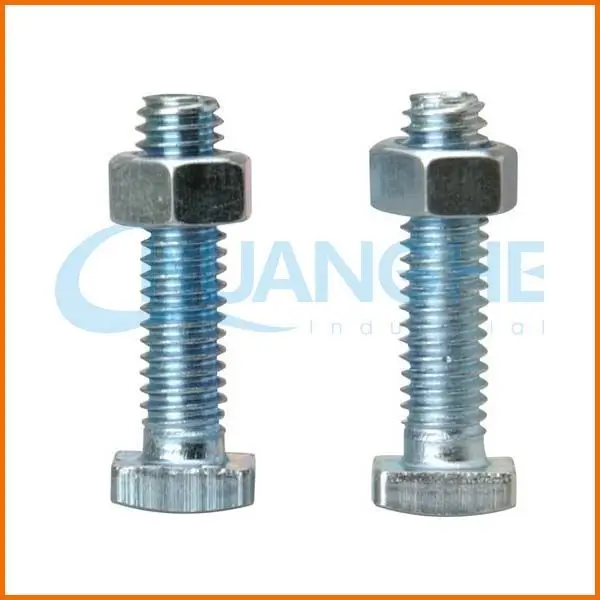 This is less likely with the much more robust wheel studs.
This is less likely with the much more robust wheel studs.
12
There are a number of things you can do to unstick the nut before turning it:
a lubricant or rust blaster. Keep things wet and give it time to work.
heat cycling. Heat it up (gently) and let it cool. Repeat. If you oil it up and point a propane torch at it, you may start a fire, so be careful. It's not so important to heat just the nut or just the stud - the cycles will do a lot of good.
vibrations and shocks. Rap the nut with a wrench. You don't have to hit hard; hitting over and over works. This can break the corrosion as well as help the lube work its way in.
There are several tools designed to make good use of shocks.
A handheld impact driver ($30) is a simple tool for around for just this purpose. You attach a socket, put it on the lug nut, twist, and hit with a hammer.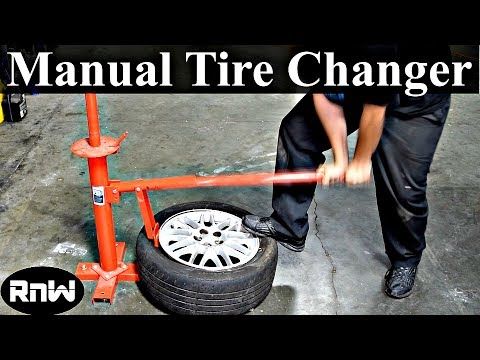 Repeat. You could do this once a minute while the lube works its way in, and apply heat in between.
Repeat. You could do this once a minute while the lube works its way in, and apply heat in between.
There are battery-powered impact drivers under $100 that I use for carpentry that can also do this job. If you already have a cordless drill, you can get an impact driver that uses the same battery. Loud!
Finally, you can do what the pros do - use a pneumatic impact wrench. You may be able to rent one for a single use.
Impact tools should be used with special impact-rated sockets. These use tougher steel and no chrome, so they are less likely to shatter. Eye protection is still a good idea.
Whenever I change a tire, I first break each lug nut while the car is still on the ground, with parking brake set, so everything is stable.
When a stud is in really bad shape, even after you break things lose, you may have to fight the rest of the way off the stud. It's a lot like cutting new threads. In that case, back off after every 1/4 turn or so, and keep adding lots of lube.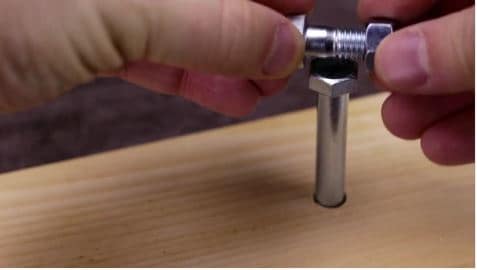
If you're trying to use the stock wrench, go out and buy a proper one! I've never seen a stock one that is any use, and some of them are so bad they may as well be made of chocolate...
A 4-way wrench is simply a cross-shaped bar with 4 different sizes of socket on the ends. You use the appropriate size one for your nuts, and then have effectively a t-bar, which means you can use both hands to get more leverage.
My preference, however, is for a telescopic bar wrench. These typically extend from around a foot to 2', and come with a selection of sockets for different sized nuts. Again, they simply allow you to get more leverage than the stock wrench, but are easier to store than a 4-way one, and by using the shorter length to re-tighten the nuts, avoids over-tightening (although as the comment above suggests, you should really use a torque wrench to tighten them correctly).
Another tip is to make sure your tyre supplier uses a torque wrench when they fit your tyres - many will use an air-gun which results in the nuts being done up excessivley tight (most likely the cause of your current problem).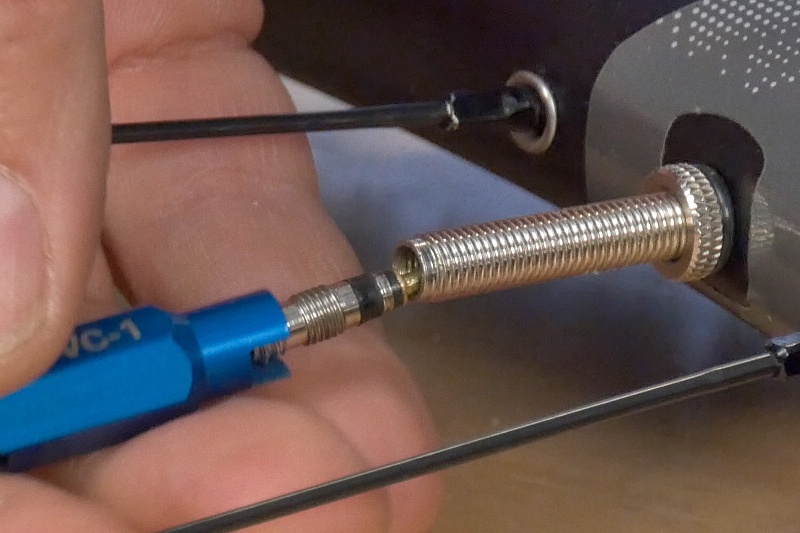
2
Learn from my mistake!! I attempted to use four different chisels to 'counter rotate' the stuck nut. NEVER do this. What happens is that the chisel force drives the annular ring of the lower portion of the nut into the well where the curved face normally sits. You get the rest of the nut finaly chisseled off and you are STUCK with the measley shxxty annular ring driven and wedged into the small well. Then you have to drill and drill with, like a 5/32 drill, a whole bunch of holes and finally drive out pieces. You can drive it around the block with all nuts very loose and this shxxty annular ring is wedged way in there. Try all the other methods, heat it up, smaller socket driven on and turned, welded 2nd nut to bad nut and removing them together, whatever, BUT don't get out your chissels!!!!! You will blow nearly a day using the chisel method and have to buy a new stud and perhaps a rim as well !!!
As Bob Cross mentioned, use the breaker bar. I've had to use them to remove brake calipers in the past. In the past, I have not seen such a thing as a breaker bar readily for sale at the hardware stores where I live.
I've had to use them to remove brake calipers in the past. In the past, I have not seen such a thing as a breaker bar readily for sale at the hardware stores where I live.
I have improvised a breaker bar using one of those metal pipes that are used for running electrical wires. Simply take your ratchet to the hardware store with you and find a suitably sized pipe that fits nicely around the ratchet handle.
2
All of the answers work.
But what works best for me (esp. on the side of the road!) is a 4 way tire wrench in conjunction with the screw type jack found on all cars.
Place the correct size socket on the wheel lug (nut). Position it as close to horizontal as possible. At the other end of the 4 way tire wrench, place your screw type jack and raise the height so that it supports the 4 way tire wrench in a horizontal position.
You now have a stable platform. The two free arms of the 4 way tire wrench are available for work.
Place your foot on the free arm that will turn the lug/wrench counter clockwise. With one hand on the car for balance, stand on the free arm, as close to the end as possible, with all your weight, and "kick" down if needed.
I like this method b/c you don't have to worry about stripping the edges of the lug/nut, and ruining it.
2
One. Dont jump on it. You risk stripping the lug and stud then you can't remove the tire and Have to replace the stud.
Two. Never supposed to use grease, silicon, or wd40 on tire lugs or studs. The stud remains lubricated and the lug can work itself loose when driving after having the tire changed.
You just need to not overtighten them in the first place. Some shops do this. And have a good tire iron with leverage. Apply firm gradual torque, not sudden aggressive torque like jumping on it or hitting with a hammer. These things can cause more harm than good and people that read this and follow this advice will be stranded on the side of some highway after stripping the lug or stud. my $.02
my $.02
Turning the tire so that the stuck/frozen nut was at the top (12 o'clock) did it for me. Another try with a pipe extender on the tire wrench and the nut "cracked" and loosened. This is actually the easiest and should be the FIRST alternative in any of the answers above. I had already put nut loosener fluid on the stud and almost "rounded" out the corners of the lug nut with forcing the wrench, which could have made it impossible to remove except by an expensive garage repair.
1
Last resort... Heat the nut, and it will expand. This might help loosen it, but try this only after you have sprayed it to deaf with corrosion removing stuff. If you can see the other side, cool the lug and it will help the process. Again, last resort.
3
I just had this problem. I got all of them loose but one at the bottom. I tried everything it wouldnt come loose. Jacked it up took it out of gear spun the tire around so that the nut was on top. It came right off without a problem.
It came right off without a problem.
Heating the stud up with an acetylene torch worked great for me. Worked for days and days with breaker bars up to 8 feet long and nothing worked. Even broke 3 heavy duty 1/2" drive impact sockets. Took me a few try's to remove the nuts with the torch and then the tire iron but the heat definitely works. I wouldn't try unless it's a last resort.
A large T-bar may be the answer. I've found that if you tilt the thing at about a 45-degree angle, get a foot on the lower end and a hand on the upper, you can use your body weight to put tremendous torque on the nut without seriously misaligning the socket/nut.
I put a pipe on the handle of the standard wrench and jumped on it. I thought I was turning the nut, but I snapped the wrench (1/2 inch diam handle). Then I tried better wrenches, without success. I put the other nuts back on gently and drove about 4 miles. That did it. But if you have a flat tire its not a solution! Maybe if you drove 30 feet on the flat that would loosen the nut without harming the tire.
I had some stubborn nuts on my Range Rover. I always have trouble. Some nuts won't accept the the socket on the wrench as they have become deformed over time. I now use a ring spanner.
In frustration I tried using my jack. I place the ring spanner over the nut and used the jack to loosen the nuts enough to turn by hand. But this has failed to work on one nut. The pressures involved made me very nervous, so I backed off and have come on here for other ideas.
1
If you didn't take the other four off in the right order, it might help to put them back on and tighten them, then try busting the stuck one loose. Then crack them all loose in the right order. For five nuts, the right order is like you're drawing a star: go around and hit every other nut. After each one just starts to turn, then go back and loosen them more.
What can happen is if the wheel isn't heels on evenly, it can start tilting a little and this could put uneven forces on the last nut that could make it harder to remove.
In addition to going in the right order, use a 4 way tire iron and plenty of torque. See other answers.
Had a slow puncture so pumped up the tyre with my electric pump then drove to the garage to get it repaired but forgot to take my torque wrench with me. Got the fitter to use a T bar and 21mm socket to tighten the nuts then drove home to set the nuts to the recommended 80 lbs ft only to find out the first one I tried wouldn't move even with standing on a long T bar. Finally resulted in winding up my 21" long torque wrench in increments until it was at 185lbs ft and standing on it, before the nut slowly moved without the torque wrench breaking. Luckily the max setting is 220lbs ft as I was getting concerned that it was going to be back to the garage.
1
Asked
Modified 1 year, 5 months ago
Viewed 71k times
A neighbor friend of mine offered to change my brakes on my Pontiac Torrent, well my husband had the proper tool to remove the lug nuts off my car in his truck, and the neighbor along with some other helpful bystanders took it upon themselves to crank, strip, smash, hammer, melt tweak and literally beat the absolute hell out of one of my lug nuts. My husband came home and popped off all the other lug nuts with ease because he had the proper tool. But the final one that had been damaged beyond recognition is still on.
My husband came home and popped off all the other lug nuts with ease because he had the proper tool. But the final one that had been damaged beyond recognition is still on.
My vehicle is completely undriveable as well as one side has brakes and the side that the lug nut is stuck on doesn’t. So I can’t even drive it to a mechanic!
My lug nut has been chiseled, hammered, torched, and drilled and it’s still not going anywhere. What else can I do? It’s been a week since this fiasco started.
12
The first thing I'd establish is to work out if the hub can be removed from the car with the wheel still attached. I encountered a similar scenario some years ago working on a car with locking wheel lugs and no key. I was able to remove the hub cap, dust cover and large castle bolt which allowed me to put the wheel and hub assembly on the bench. Doing this may also mean you can drill the wheels stud out from the back which may be easier.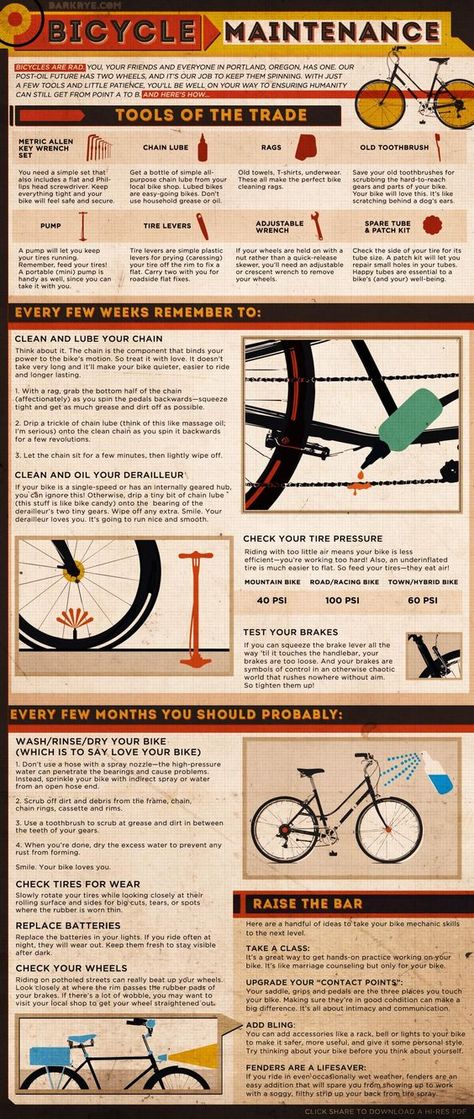
Failing that, I'd order a "locking wheel nut removal kit" which is essentially a selection of sockets with a reverse thread in them so as you turn it in the direction required to unscrew the lug nut, it tightens itself onto the nut until it binds at which point the nut begins to unscrew.
Another option to try is finding a sacrificial deep or semi-deep socket that is an interference fit for the nut then welding through the centre of the socket onto the lug nut. You can then turn it off normally.
It may be worth calling your local auto shop. Yes, you can't drive it to them but some may be happy to come to you with a selection of tools or recover it to their shop on a tow truck or trailer.
Good luck, it's an awful pickle to be in.
10
For stubborn nuts , heat the nut with a torch, then move the flame away and immediately apply WD-40 or any other penetrating oil against the heated bolt threads. The quick change from high heat to to the cool oil will cause the nut to retract and expand, allowing the penetrating oil deeper into the threads to create a slippery surface. You can do this multiple times. Just make sure there is nothing flammable around when torching. After doing this a couple times, use a breaker bar to pull it free.
You can do this multiple times. Just make sure there is nothing flammable around when torching. After doing this a couple times, use a breaker bar to pull it free.
If that fails, I would then use an angle grinder to cut a groove in the nut, and use a flathead bit on an impact to get it out.
Good luck!
4
Getting a nut off in this case can be done, how you would attack it depends on access to it. If the nut sticks out you could use a nut breaker to crack it off, or get a big pair of locking pliers, tightening the damn thing down as much as you can.
If you can't get a pliers or nut breaker on then I'd try to use a rotary tool and a metal cutting disk to cut a deep groove on the top of the nut, then use a big, fat flathead screwdriver on it. Be careful not to cut into your alloy doing it though, and protect the alloy from the sparks with some tape.
Last you can also buy special socket tools which wind on.
Before you do anything though spray the nut and the area around it liberally with penetrating fluid like WD40. Do that several times and give it an hour to soak in. Works wonders.
Well, the only thing I can suggest is to drill it out with a sharp drill, but for that to work there will need to be a drill-guide so that the wheel does not get damaged (anymore...)
3
Get a socket you don't mind ruining and weld it to the nut. Then use a pipe on the end of the socket wrench for some leverage. As messed up as that lug already is, use a decent quality socket wrench or that thing could break under the force (I've done that a couple of times). If you don't have access to a welder you can try some JB Weld (lots of places sell it). Use the JB Weld as a "last resort" though, because if it doesn't hold the socket there may be residue on the nut itself making things even tougher.
Just know that you are probably going to lose the bolt (wheel stud) as a result of this.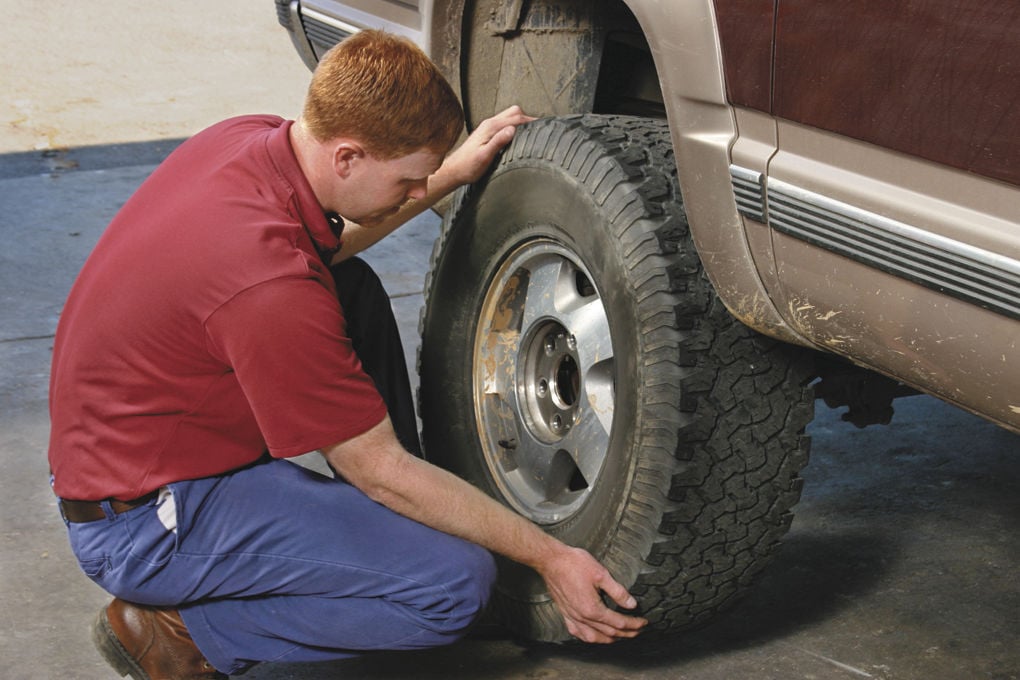 It isn't a huge deal: assuming nothing else is damaged, it can be replaced without too much difficulty.
It isn't a huge deal: assuming nothing else is damaged, it can be replaced without too much difficulty.
The safe way to do this is put all tires on as well as you can, as many lugs as you can, and get a tow to a shop. Let them do the socket welding trick. Also, please egg your neighbors' house.
8
I bought a car that had wheel locks. Basically weird shaped lugs with special sockets to remove them. Of course the previous owner lost the unlock sockets.
On 1 wheel I put a socket over it and hit it with a sledgehammer. The socket split. I tried again with thicker sockets. It worked...eventually.
The other 3 I took a grinder and cut a flat edge on 2 sides of the lug nut until I could slip a good size (I want to say 11/16) wrench on it. That seemed easiest, the other 3 locks were off in about 20 mins.
1
Get the kind of cutting wheel that fits on a drill motor so you can cut almost flush with the wheel. Cut off both the nut and the lug. Then you can drive with the other four lugs/nuts to a place that can replace the cut-off lug.
Cut off both the nut and the lug. Then you can drive with the other four lugs/nuts to a place that can replace the cut-off lug.
3
The hard part is that if it's stuck hard enough that it didn't come off before, the various normal methods for removing a stuck bolt may not get enough grip. Also it looks like things are bent enough that maybe it's touching the hub rim...
But, if the other methods fail, short of buzzing the whole thing off with a grinder and then drilling out what few threads remain and replacing the stud, you might be able to split the nut. Take a dremel-type rotary tool and carefully slice down either side of the nut but not so deeply that you damage the threads, then stick a large cold-chisel (metal-cutting chisel) in the notch and give it a couple good whacks with a large hammer. With luck you can break the nut in half without too much damage to the stud.
Otherwise, buzz it off, drill it out, replace the stud.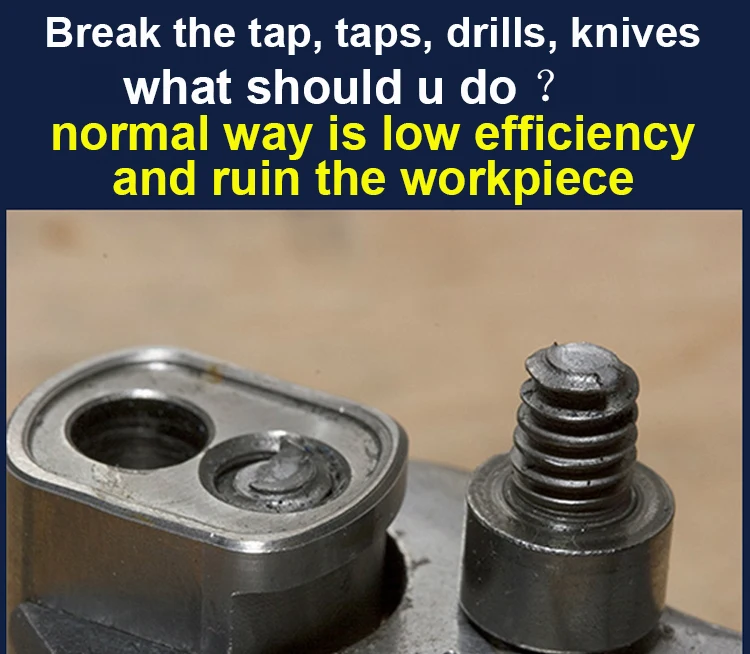 Should take less than three hours if you have the tools and are good with your hands. Put some PTFE tape on the threads when you put the nuts back on to keep them from rusting in place next time since your lug nuts don't have caps.
Should take less than three hours if you have the tools and are good with your hands. Put some PTFE tape on the threads when you put the nuts back on to keep them from rusting in place next time since your lug nuts don't have caps.
Im going to try a hole saw cutting enough of the outer portion of the nut to break it out (hopefully) using a hole saw small enough to pass threw the hole in the rim. Basically cutting the threads off. If that doesn't work I'll hole saw right through the rim big enough so the nut will fit through. 4 out of 5 still there is good enough for me. ;)
Torch it. Melt the lug to slag and remove the wheel. Replace the stud yourself or drive to a mechanic with 4/5 lugs on and have them do it.
2
Wheel bolts attach the car wheel to the hub and whenever you want to change tires, get access to the suspension, brakes, you have to unscrew them. The ability to unscrew the wheel is necessary for every driver, since no one is immune from punctures. Unscrewing the bolts is not at all difficult, but if they have not been touched for a long time, they can rust. Our article will help to cope with such a problem. 9Ol000
The ability to unscrew the wheel is necessary for every driver, since no one is immune from punctures. Unscrewing the bolts is not at all difficult, but if they have not been touched for a long time, they can rust. Our article will help to cope with such a problem. 9Ol000
To prevent the vehicle from rolling away, place it on a level surface and apply the parking brake.
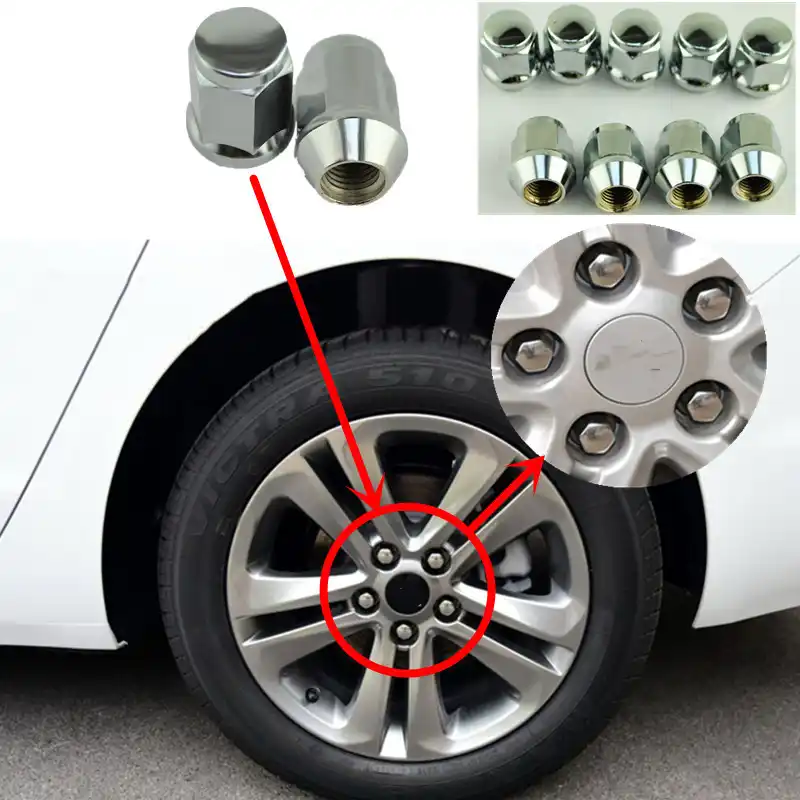
 Do not jack up the machine until the bolts are loosened.
Do not jack up the machine until the bolts are loosened.
Check that the machine is on the handbrake. If the bolts stick, it will take a lot of force, so make sure the vehicle will not move.
Often, wheel wrenches have a short handle, which does not allow you to develop sufficient force. The easiest and safest way is to extend the handle of your key. This will make it possible to create a very significant effort. In the absence of a wrench with a long handle, you need to put a metal pipe on the handle of your wrench.
If your arms aren't strong enough to loosen bolts, use the strongest muscle in your body, your legs. To do this, put the wrench on the nut so that the handle is parallel to the ground. Carefully place one foot on the key so that it spins counterclockwise. You can also lean on the car with your hands and stand on the key with both feet. Then jump a little. When the nut has moved, unscrew it as usual. Be very careful. The key is not the trampoline. You can not kick the key or jump on it so that the feet come off the handle. Avoid sudden loads on the key.
To do this, put the wrench on the nut so that the handle is parallel to the ground. Carefully place one foot on the key so that it spins counterclockwise. You can also lean on the car with your hands and stand on the key with both feet. Then jump a little. When the nut has moved, unscrew it as usual. Be very careful. The key is not the trampoline. You can not kick the key or jump on it so that the feet come off the handle. Avoid sudden loads on the key.
Take a hammer or mallet and hit the handle of the wrench, in some cases this is great for loosening stuck nuts. In extreme cases, even a stone can be used instead of a hammer. Avoid slipping as the bolt and wrench may be damaged. It is necessary to apply short well-aimed blows.
Use a torque wrench when tightening bolts. If the wheel bolts on your vehicle are too tight after the last removal of the wheels, use a torque wrench to secure the wheels to the torque recommended in the manual.
Chemicals should only be used as a last resort. If the bolts are overtight, apply Liquid Wrench or PB Blaster to the bolt. To apply the product exactly on the bolt, use a watering can with a thin spout. Wait ten minutes and try to unscrew.
Lubricant on the brake disc can increase braking distance and cause an accident. If liquid gets on the disc, clean it with a solvent and a clean rag. If oil gets on the pads, you will have to replace them.
If the car's wheel is stuck to the hub, loosen the bolts and try driving the car for a short distance. This force will pull the wheel off the hub.
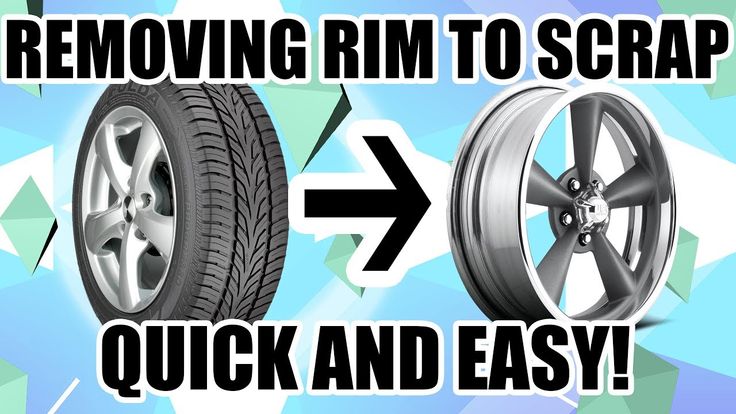 How to put up a jack. Types of jacks for cars.
How to put up a jack. Types of jacks for cars. 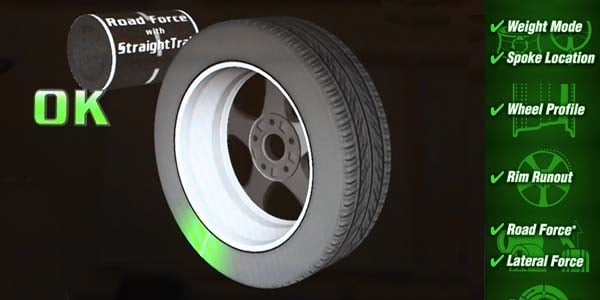 Peugeot 206 rear beam malfunction, Peugeot 206 rear beam repair
Peugeot 206 rear beam malfunction, Peugeot 206 rear beam repair 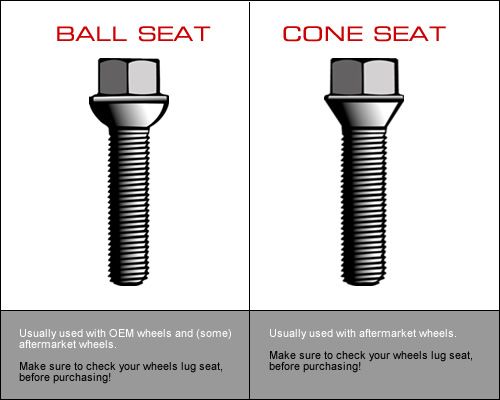 Lost car key what to do, car key inside the car
Lost car key what to do, car key inside the car Photo: AvtoVzglyad
Rolled bolts and studs, "licked" edges of nuts increase the time and cost of car repairs.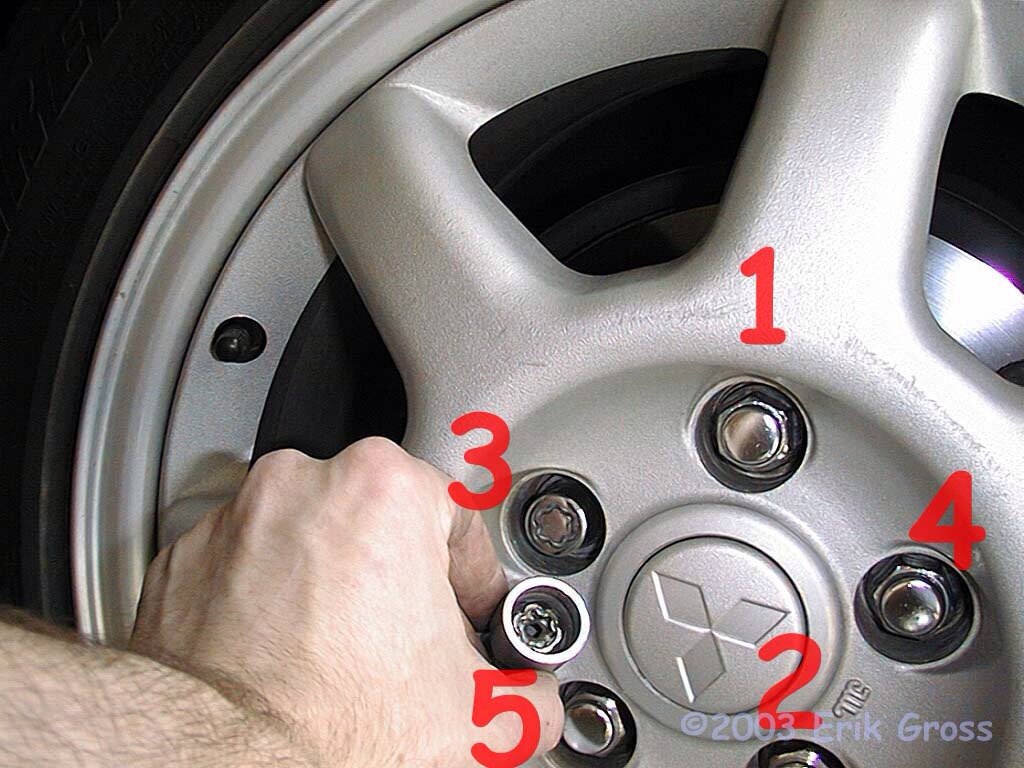 How to disassemble threaded connections and keep fasteners intact? The experts of the portal "AvtoVzglyad" will prompt.
How to disassemble threaded connections and keep fasteners intact? The experts of the portal "AvtoVzglyad" will prompt.
Lika Shutter
Very often repair or maintenance of a car begins with the disassembly of threaded connections. For example, when a seasonal tire change occurs. By itself, the process of unscrewing the bolts is not difficult, but only if the fasteners resist. As practice shows, during the summer season, wheel bolts and nuts can boil.
A rolled bolt, especially when its body is left in the hole, will either have to be drilled or removed with an extractor (this is such a special reverse screw that is screwed counterclockwise into a pre-drilled hole in the body of the bolt or stud), which requires a special tool , and experience. If you act ineptly, then it is quite easy to damage the threads in the well, and then you will have to correct it with the help of taps, which, again, not everyone has. Well, “dancing with tambourines”, when a steel bar is welded to a broken bolt in order to unscrew its remnants, this is generally aerobatics.
Who has a welding machine? Who can accurately and at the same time securely “grab” the details? Not only will you have to pay extra for this work, but how much time will you have to kill searching for and buying the necessary fasteners. Therefore, taking care of how to unscrew the soured fasteners so as not to damage it is worth it in advance.
Photo: AvtoVzglyad
To avoid all the problems described above, experts recommend using specialized tools that make it easier to disassemble soured fasteners and minimize the likelihood of damage. We are talking about the so-called penetrating lubricants, including all kinds of "liquid keys".
Actually, the name speaks for itself, and their main property is precisely penetrating, that is, how quickly the composition will penetrate into the joint, and it will lend itself to unscrewing. By the way, one of the best among them is the Liquid Key from Astrohim. As practice confirms, the domestic composition effectively impregnates rust, minimizing the shear moment, and it will not be necessary to “soak” soured fasteners for a long time.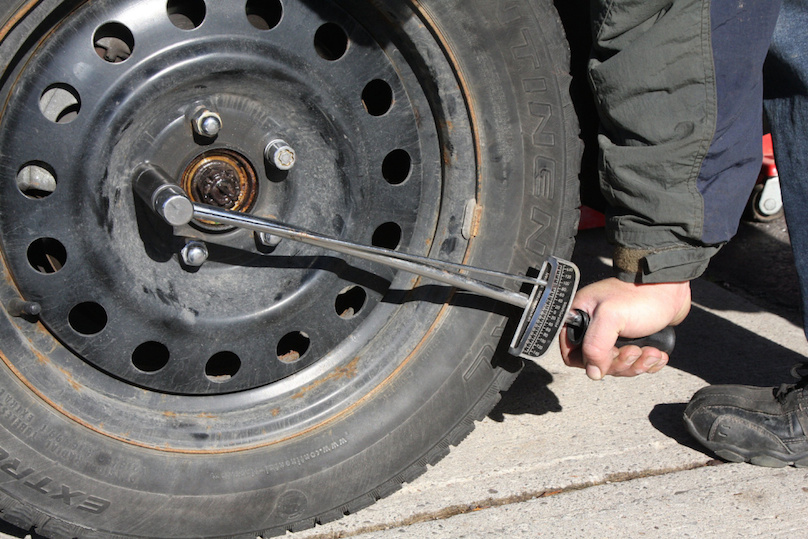
Compounds of this kind are applied directly to fasteners that have been previously cleaned of dirt and rust. After a few minutes, you can pick up tools and unscrew the fasteners, which should “go” with less effort
and, most importantly, stay safe and sound. Shamanism? — no, physics and chemistry in action!
Photo: AvtoVzglyad
The active composition, penetrating through the micropores into the gaps between the parts, delivers lubricating components there. It is they that impregnate the corrosion products and reduce the shear moment of the "stuck" elements relative to each other. But the effect is achieved only on the condition that the composition penetrates as deep as possible into the soured compound. What's the point if it wets only the surface layer of rust?!
Therefore, in order not to jump on the balloon wrench or not to use an extension (pipe), risking turning off the fasteners or loosening the stud (it can turn in the drum or hub), you can simply soak it with a “liquid wrench” and unscrew it without barbaric methods.